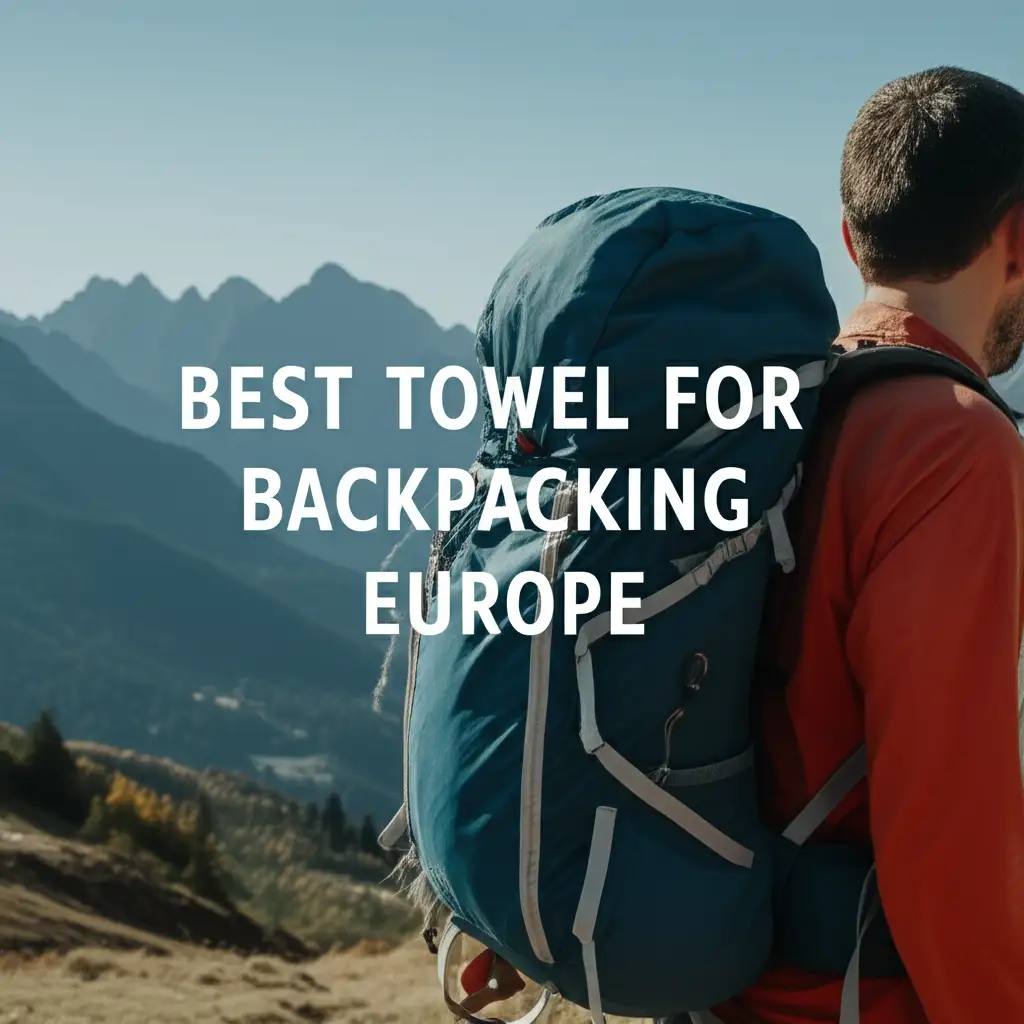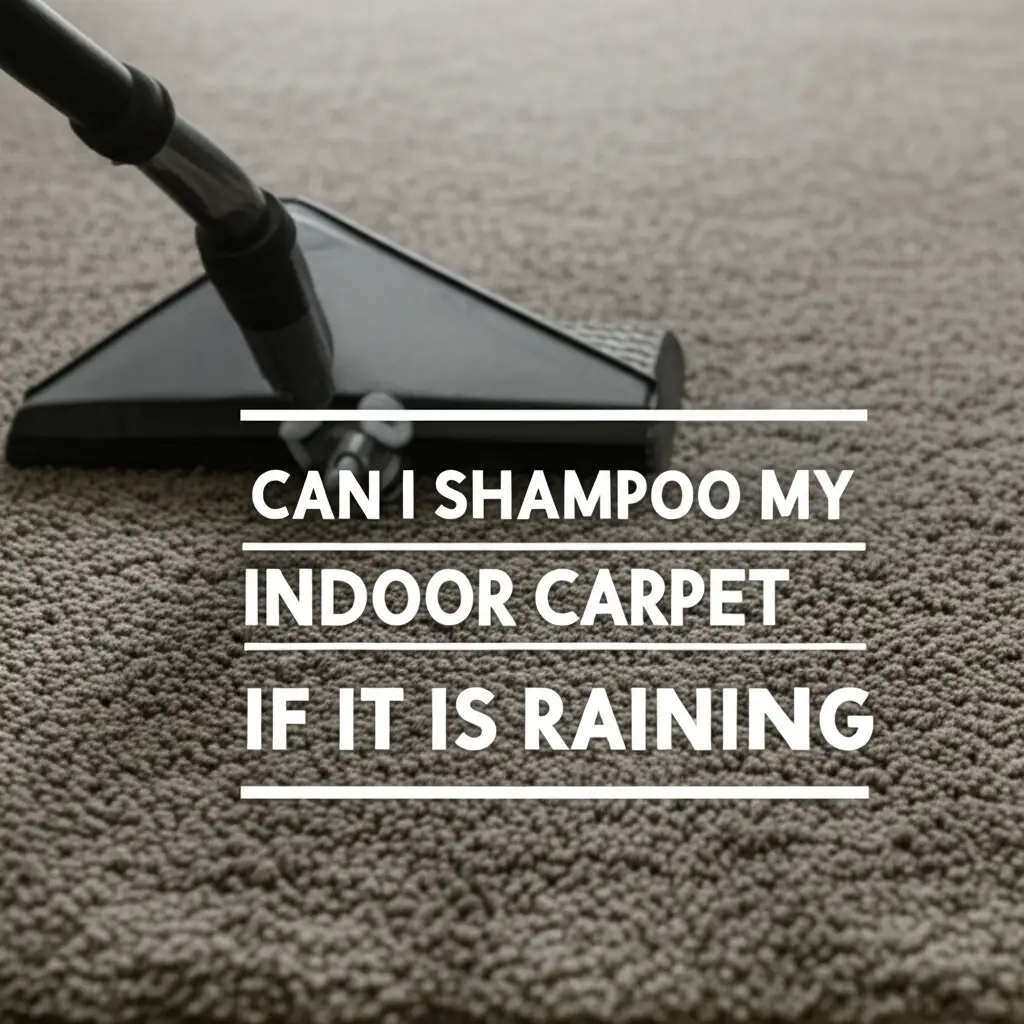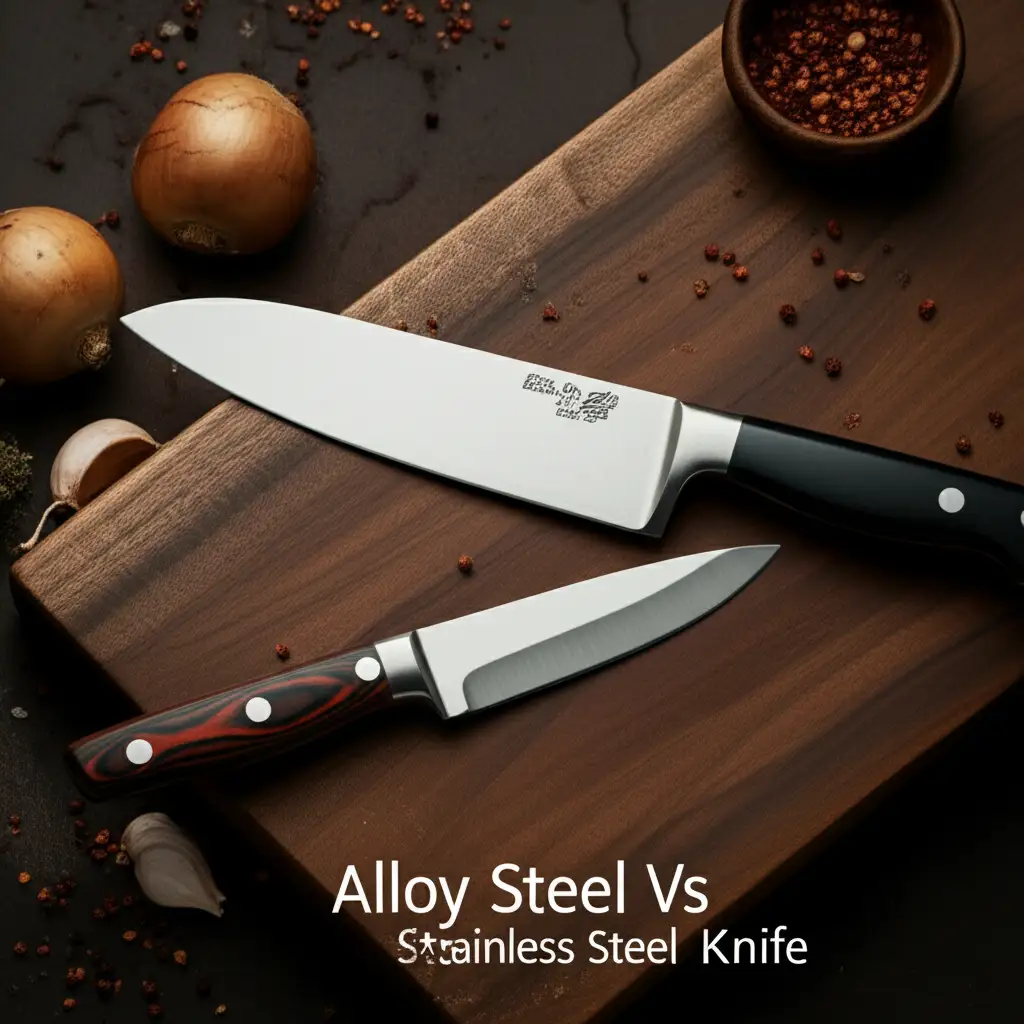· Mason Everett · Travel Gear · 15 min read
Best Towel For Backpacking Europe

Pack Light, Dry Fast: The Best Towel for Backpacking Europe
Imagine this: You are exploring the charming streets of Rome, then hiking the stunning Swiss Alps. Your backpack feels heavy. Every item you carry matters, especially when packing for a multi-country adventure. One often overlooked item is your towel. Choosing the best towel for backpacking Europe can make a huge difference in your comfort and packing efficiency.
A regular cotton towel is bulky and slow to dry. It can become heavy, smelly, and a burden. Backpackers need something different. This article guides you through selecting the ideal travel towel. We will explore various types, key features, and how to pick the right size. Get ready to lighten your load and stay fresh on your European journey.
Takeaway
- Prioritize Quick-Drying: Choose towels that dry rapidly to avoid mildew and odors.
- Opt for Compactness: Select towels that fold down small, saving precious backpack space.
- Focus on Lightweight Materials: Look for materials like microfiber to minimize weight.
- Consider Anti-Microbial Properties: These features help keep your towel fresh longer.
The best towel for backpacking Europe is a lightweight, quick-drying microfiber towel. It packs small and performs well in various environments. This type of towel ensures you stay dry and fresh without adding unnecessary bulk to your backpack.
Why Your Towel Matters for European Backpacking Adventures
When you backpack across Europe, space and weight are precious. Every ounce in your bag counts. A bulky, heavy towel consumes valuable room. It adds unnecessary weight to your shoulders. This impacts your comfort during long travel days.
Traditional cotton towels absorb a lot of water. They take a long time to dry. This creates problems in hostels or busy campsites. A damp towel can start to smell. It can also transfer mildew to other clothes in your bag. You need a towel that dries quickly. It should pack down small. This helps you maintain hygiene and keep your belongings fresh.
Imagine having a fresh, dry towel ready each morning. This is possible with the right choice. A good travel towel keeps your bag lighter. It also ensures you feel clean and refreshed. This enhances your overall travel experience. I know from my own trips how important this is.
A high-quality towel is an investment. It provides comfort and convenience on your journey. It helps you avoid common travel frustrations. Think of it as an essential piece of your backpacking gear. It supports your hygiene and makes packing easier.
Types of Towels: Finding the Ideal Travel Companion
Several towel types exist, but not all suit backpacking. Understanding the differences helps you choose wisely. Your goal is a towel that balances absorbency, drying time, and packability. Let’s look at the best options for your European adventure.
Microfiber Travel Towels: The Top Contender
Microfiber towels are the most popular choice for backpackers. They are synthetic towels made from very fine fibers. These fibers give them excellent absorbency. They also make them incredibly quick-drying. Microfiber towels can absorb several times their weight in water. They dry much faster than cotton. This is crucial for frequent moves between hostels or campsites.
They are also very compact. You can fold a large microfiber towel into a small pouch. This saves a lot of space in your backpack. Many come with anti-bacterial treatments. This helps prevent odors, keeping your towel fresh. I always recommend a microfiber towel for serious travelers. They are a true game-changer for staying fresh on the road.
Bamboo Towels: An Eco-Friendly Alternative
Bamboo towels offer a natural, eco-friendly option. They are soft and highly absorbent. Bamboo fabric is naturally anti-bacterial. This helps reduce odors during your trip. They are also gentle on the skin. This can be a nice bonus after a long day of exploring.
While absorbent, bamboo towels typically dry slower than microfiber. They also might be slightly bulkier. If quick drying is your absolute top priority, microfiber wins. However, if you prefer natural materials and a softer feel, bamboo is a good choice. Consider your personal preference and drying conditions.
Linen Towels: Lightweight and Quick-Drying
Linen towels are another natural option. They are very thin and lightweight. Linen is known for drying quickly. It is also durable and gets softer with use. Linen towels offer good breathability. This helps them air out even in humid conditions.
They might not be as absorbent as microfiber or bamboo. You may need to pat yourself dry rather than wrap up. Linen towels can also feel a bit stiff at first. They soften over time. They are a good choice if you prioritize natural fibers and fast drying without needing extreme absorbency. They also pack very flat.
Key Features to Look for in a Backpacking Towel
Choosing the perfect towel involves more than just picking a material. Several features contribute to a towel’s effectiveness for backpacking. Paying attention to these details ensures your towel serves you well throughout your trip.
Absorbency: Your towel needs to soak up water efficiently. Microfiber excels here. It draws water away from your body quickly. This leaves you feeling dry. A highly absorbent towel means less rubbing and more effective drying.
Quick-Drying Time: This is paramount. A towel that dries fast prevents mildew and bad smells. It also means you can pack it away sooner. Look for towels that claim to dry in minutes, not hours. This saves you stress and keeps your backpack fresh. Drying a towel properly helps maintain its cleanliness and prevents issues. Knowing how to perform proper cleaning methods for all your items can extend their life. You can learn more about general cleaning methods here.
Compact Size: Space is limited in a backpack. Your towel should fold or roll into a very small package. Many travel towels come with their own stuff sacks. This helps them compress even further. A compact towel frees up room for other essentials.
Lightweight: Every gram adds up. A lightweight towel reduces the overall burden on your back. Microfiber towels are exceptionally light for their size. This feature is crucial for comfortable travel, especially during long journeys.
Anti-Microbial Properties: Some towels have special coatings. These coatings prevent bacteria growth. This feature helps the towel stay fresh longer. It reduces the need for frequent washing. This is a big plus in places with limited laundry access. It helps in maintaining cleanliness and helps you look and feel clean even after a long day. Discover more tips on how to look and feel clean.
Hanging Loop: A small loop is simple but useful. It lets you hang your towel easily. You can hang it from a hook in a hostel bathroom or on a tree branch. This allows for better airflow and faster drying. It also keeps your towel off dirty surfaces.
Choosing the Right Size and Weight for Your Europe Trip
Selecting the correct size and weight for your backpacking towel is a balance. You want enough coverage without adding unnecessary bulk. Different sizes cater to different needs during your trip. Consider how you plan to use your towel most often.
Most travel towels come in a few standard sizes. These usually include small, medium, and large.
- Small (Hand/Face Towel): This size is great for quick face washes or drying hands. It is very compact and light. Some travelers bring a small towel for daily use and a larger one for showers.
- Medium (Body Towel): This is often the most versatile size. It offers enough coverage for a full body dry. It still packs down reasonably small. Many backpackers find this size ideal for hostels and gym showers. It balances functionality with packability.
- Large (Beach/Bath Towel): This size provides full coverage. It can even double as a beach blanket or picnic mat. While offering maximum comfort, it will be heavier and take up more space. If beach days are a big part of your Europe itinerary, a large size might be worth the extra bulk. However, for general backpacking, it might be excessive.
Think about your itinerary. Will you mostly stay in hostels with showers? A medium towel is probably best. Do you plan many beach visits or camping trips? A larger one might suit you. I usually pack a medium size. It offers the best compromise. It dries fast and fits easily into my pack.
The towel’s weight directly relates to its size and material. Microfiber towels are inherently lightweight. A larger microfiber towel might still weigh less than a small cotton one. Always check the towel’s specifications for weight before buying. Aim for the lightest option that meets your size needs. Every gram saved makes your journey more comfortable.
Top Recommended Towels for Backpacking Europe
Many brands offer excellent travel towels today. They focus on the core needs of backpackers: lightness, compactness, and quick drying. While I cannot name specific product models, I can describe the types and features found in top-tier travel towels. These models represent the best towel for backpacking Europe in terms of functionality and design.
When you shop, look for towels that emphasize these characteristics:
- Premium Microfiber Fabric: The best towels use high-quality microfiber. This material feels softer against the skin. It absorbs water efficiently and dries incredibly fast. It also avoids that slightly “sticky” feeling sometimes found in lower-quality microfiber.
- Advanced Anti-Odor Treatment: Many top brands incorporate silver ion technology or similar treatments. These inhibit bacterial growth. This means your towel stays fresh for days. You will not worry about unpleasant smells. This feature is a game-changer for extended trips.
- Integrated Hanging Loop with Snap: A robust loop with a snap closure is a simple but vital feature. It allows you to hang your towel securely. You can hang it anywhere to air dry. The snap prevents it from slipping off, even in breezy conditions.
- Compact Storage Pouch: Most high-quality travel towels come with a small, breathable mesh pouch. This pouch helps compress the towel. It also keeps it separate from other items in your backpack. This is very useful for organization.
- Variety of Sizes: Top brands offer their towels in multiple sizes. This lets you choose exactly what you need. You can pick a small towel for your hair or a large one for showering and beach use. The best options provide flexibility.
- Durable Stitching and Construction: A travel towel sees a lot of use. Good towels feature strong stitching and durable edges. This ensures they withstand repeated washing and packing. They will last many trips.
When choosing, read reviews from other backpackers. They often share valuable insights on real-world performance. Look for towels that consistently receive praise for their drying speed and lack of odor. Investing in a quality towel will pay off on your European adventure.
Caring for Your Travel Towel on the Go
Proper care keeps your travel towel fresh and extends its life. This is especially important when backpacking across Europe. You might not always have access to laundry facilities. Following these simple steps will help.
Washing:
- Hand Wash: In hostels or sinks, hand washing is common. Use a small amount of mild soap. Rinse thoroughly until no suds remain.
- Machine Wash: When you find a laundry mat, wash your towel with similar colors. Use cold water. Avoid fabric softeners. Fabric softeners can reduce the towel’s absorbency over time.
- No Bleach: Bleach can damage the fibers of your towel. It can also strip away anti-microbial treatments.
Drying:
- Air Dry is Best: Travel towels dry very quickly when air-dried. Hang it in a well-ventilated area. A clothesline, a chair, or even your backpack strap works. Use the integrated hanging loop if your towel has one.
- Avoid Direct Sunlight (Extreme Heat): While sunlight helps dry, prolonged direct sun can harm certain microfiber materials. Hang it in the shade if the sun is very intense.
- No Dryer Sheets: Like fabric softener, dryer sheets can leave a residue. This residue reduces absorbency.
- Low Heat Tumble Dry (If necessary): If you must use a dryer, choose a low heat setting. High heat can damage synthetic fibers.
Preventing Odors:
- Dry Completely: Always ensure your towel is completely dry before packing it away. Even slightly damp towels can breed mildew and odors.
- Anti-Microbial Features: If your towel has anti-microbial properties, it will naturally resist odors better.
- Occasional Deep Clean: If your towel starts to smell even after washing, try soaking it. Use a solution of water and white vinegar. This can help remove stubborn odors. For general cleaning tasks, understanding simple cleaning steps is helpful. Explore simple steps for common cleaning needs.
Storage:
- Breathable Pouch: Store your towel in its mesh or breathable stuff sack. Avoid airtight bags unless the towel is fully dry.
- Keep Separate: Keep your towel separate from dirty clothes if it is not fully dry. This prevents moisture transfer and odors.
By following these care tips, your travel towel will remain a reliable companion. It will stay fresh and effective throughout your European adventure. Knowing effective cleaning practices helps keep all your items in good condition, even items like rugs. You can learn about effective cleaning practices for rugs here.
Beyond the Shower: Creative Uses for Your Backpacking Towel
Your backpacking towel is more than just a drying tool. Its lightweight, absorbent, and quick-drying nature makes it incredibly versatile. Thinking creatively about its uses can enhance your trip. This multi-functionality truly makes it one of the best towels for backpacking Europe.
Here are some clever ways to use your travel towel:
- Beach Blanket or Picnic Mat: A larger travel towel can easily serve as a personal beach blanket. It is perfect for sunny days by the Mediterranean or picnics in Parisian parks. It dries quickly after use.
- Emergency Pillow: Roll your towel tightly and stuff it into a shirt or a dedicated pillowcase. It creates a soft, supportive pillow for long bus rides or hostel beds. This saves space compared to carrying a separate travel pillow.
- Sun Shade: In hot, sunny destinations, drape your towel over your head or shoulders. It offers instant protection from the sun’s harsh rays. This is especially useful when waiting for transportation.
- Light Blanket: On cool evenings, a larger towel can offer a bit of extra warmth. It works as a light blanket in a chilly hostel room or during outdoor events.
- Makeshift Scarf or Sarong: Use your towel as a fashionable accessory. It can act as a scarf to keep you warm or a sarong for modesty. This is handy for visiting religious sites that require covered shoulders or knees.
- Emergency Bandage or Tourniquet: In a pinch, a clean towel can provide first aid. You can use it to apply pressure to a wound or even create a makeshift sling.
- Seat Cover: Protect yourself from dirty bus seats or park benches. Lay your towel down before sitting. It keeps your clothes clean.
- Sweat Rag: On hot days or during strenuous hikes, use your small towel to wipe sweat. It absorbs moisture well and dries fast.
- Dish Drying: If you are staying in a self-catering apartment or camping, your towel can double as a dishcloth. It helps dry pots and pans efficiently.
Embracing these alternative uses saves space in your backpack. It also makes your travel experience more convenient. Your travel towel truly earns its spot as an indispensable item for your European adventure.
Frequently Asked Questions
Q1: Can I just bring a regular cotton towel for backpacking?
Bringing a regular cotton towel is not ideal for backpacking. Cotton towels are heavy and bulky. They take a very long time to dry. This can lead to mildew and unpleasant smells in your backpack. Travel towels are much lighter, more compact, and quick-drying, making them a far better choice for efficiency and hygiene on the go.
Q2: How do I dry my travel towel quickly in a hostel?
To dry your travel towel quickly in a hostel, hang it in a well-ventilated area. Use the towel’s hanging loop if it has one. Choose a spot with good airflow, like near an open window or fan. Avoid direct sunlight indoors, but a breezy spot is perfect. Ensure it is completely dry before packing it away to prevent odors.
Q3: Are anti-microbial towels really worth it for backpacking?
Yes, anti-microbial towels are definitely worth it for backpacking. They have special treatments that prevent bacteria growth. This keeps your towel fresh and odor-free for longer periods. This is a huge benefit when you have limited laundry access. It means less washing and a cleaner-smelling bag, enhancing your overall comfort.
Q4: What size towel is best for a multi-week trip to Europe?
For a multi-week trip to Europe, a medium-sized travel towel is generally best. It offers enough coverage for a full body dry. It still packs down very small. This size provides a good balance between functionality and packability. It is versatile enough for showers, quick washes, and even some light beach use.
Q5: Can I use my travel towel for the beach in Europe?
Yes, you can absolutely use your travel towel for the beach in Europe. Many travel towels, especially larger ones, work well as beach towels. They are lightweight and dry much faster than traditional beach towels. This means you can quickly pack them up after a swim. They are perfect for relaxing on European beaches.
Conclusion
Embarking on a backpacking trip through Europe is an exciting adventure. Every item you choose for your pack plays a role in your comfort and experience. Selecting the best towel for backpacking Europe might seem small. However, it significantly impacts your daily convenience and hygiene. Remember, the ideal towel is lightweight, super absorbent, and dries in a flash.
Opting for a high-quality microfiber towel with anti-microbial properties will serve you well. It saves valuable space and weight in your backpack. It ensures you always have a fresh, dry towel, no matter where your travels take you. From bustling city hostels to serene lakeside campsites, your towel will be a dependable companion. Choose wisely, pack light, and enjoy every moment of your incredible European journey.





